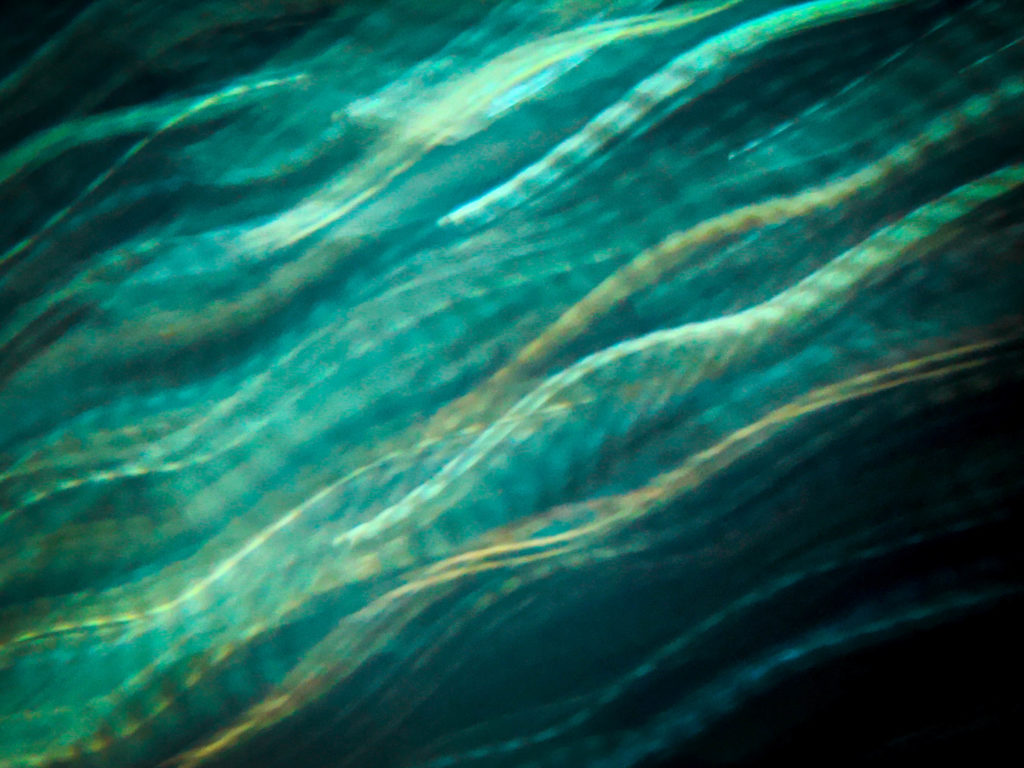From sand-speck to intrepid traveller, Michael Malay considers the metamorphosis of the eel.

Photo: Anguilla anguilla / Eels by Dafydd Parri on Flickr
- On the birth and death of eels
Eels are tiny when they are born, no bigger than a speck of sand, and completely transparent. If you could look through them, you would see into the world. As they grow older, though, they begin to absorb light, to bend and to capture it. Their skin darkens, their bodies lengthen, and their translucency is replaced by a brackish brown. Streaks of yellow run down their flanks, like bars of muddy gold, and their eyes grow more pronounced. The speck of sand has become a yellow eel.
The transformations only continue, change following change. As they grow, their yellow flanks darken, shade into umber, until, reaching full maturity, they take on the colours of a starry midnight. A slick, glossy black covers their top half, while their underbellies take on a silvery sheen. Glints of brown and green cover their back like flecks of mica. The yellow eel has become a silver eel.
Later, when they are ready to breed, eels will abandon their mud-holes in the river and turn their noses west, to the Sargasso Sea. It’s a place they hardly know, having left it when they were only a few days old. But it’s a region written into their bodies, and to which they return with unerring precision. During the day, they dive down to depths of two hundred metres, before moving upwards again at night. Their voyage thus describes a kind of sinewave, a diurnal dipping followed by a nocturnal surfacing: the arc of their homecoming.
The journey back is determinedly single-minded. Eels do not eat as they swim west, having already prepared for this voyage by storing up rich layers of fat. This is why they are rarely caught at sea. They are not returning for themselves but for the future, which makes itself felt as an itch in their bellies. After breeding, it is thought that adult eels simply perish and fall to the sea floor, where they turn into so much silt. But what survives them is instinct: millions of eggs floating up to the surface of the sea, like sparks from an unseen anvil. Each egg is a tiny plasma of light, each an eel waiting to be born.
- Springtime
Elvers – the name for juvenile eels – arrive in Britain in the spring. And sometimes, in tidal rivers such as the Severn, they surge upstream on the spring tides of April and May. Part of the magic of elvers, then, part of their elvish charm, is how they unite the various meanings of spring. They leap into our world as the sap begins to rise, on the first spring tides of the year. (Spring: from the Old English springan, meaning an energetic leap or a sudden burst.)
And so — as with the return of swallows and swifts — elvers help fetch the year to us. Their entry into rivers is calendricallly precise, and if one could hover over the rivers of Britain, staying there patiently for days, for weeks, one would see what the kestrel sees: a greenness blooming as the elvers pass, an activating greenness that summons the wild garlic and bluebells of April, the cornflowers and dandelions of May…
- Borderlands
Eels are finding it harder to live here. After arriving in Britain, fresh from their Sargasso voyage, they meet with a series of strange riddles: dams, sluice gates, tidal fences, barrages, weirs. Today, there are more than one million man-made obstructions in rivers and streams across Europe.
The contradiction couldn’t be greater. On one hand, the obduracy of concrete and the flushness of steel, and on the other hand, this sinuous rope of changing life. An eel undergoes no fewer than four metamorphoses throughout its life, as it transforms from being a leptocephalus to an elver, and then from yellow eel to a silver eel. It is an emissary from a world of flows. Everywhere, though, it is being met by borders and walls, borders and walls.
I am always being born, it says, and now – can you hear it? – watch me as I disappear.
- The voyage back
It is night and the eels are stirring. They are gliding along rivers and streams, back towards the estuaries, feeling their way to the memory of salt. There are millions of them, cells tingling with the call of home, and later, following some instinct, they will nose out into those bigger waters, into the astonishment of the sea. This time, though, everything has changed: the rivers they leave behind, so unfamiliar at first, are the only worlds they know, whereas the Sargasso Sea, where they were born, is a place of mystery.
Low clouds over the hills; rain falling on the river; and water mixing with water, at those edgeless places where river becomes estuary becomes sea. Soon, the eels will leave this all behind. For now, though, they are waiting in the dark, eyes watching the moon.
*
An earlier version of this piece was published by Bristol University’s Centre of Environmental Humanities.
Michael Malay is a teacher and writer based in Bristol. His first book, ‘Late Light’, will be appearing in 2023.
Alongside poet, Guillemot Press founding editor, and fellow eel enthusiast Luke Thompson, Michael will revel in eel appeal as part of our lineup for this year’s Camp Good Life, which takes place in Hawarden, Wales, later this month. More information here.